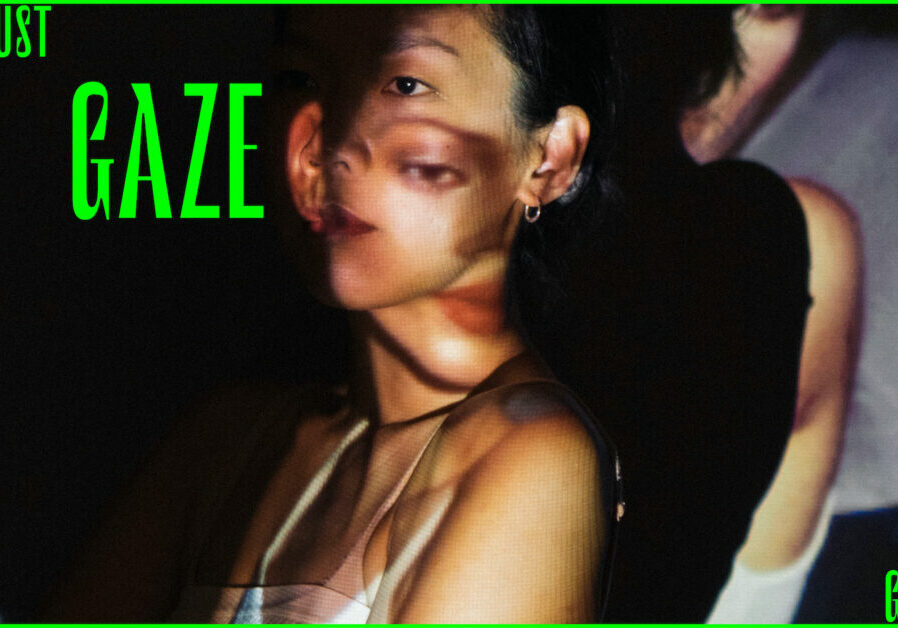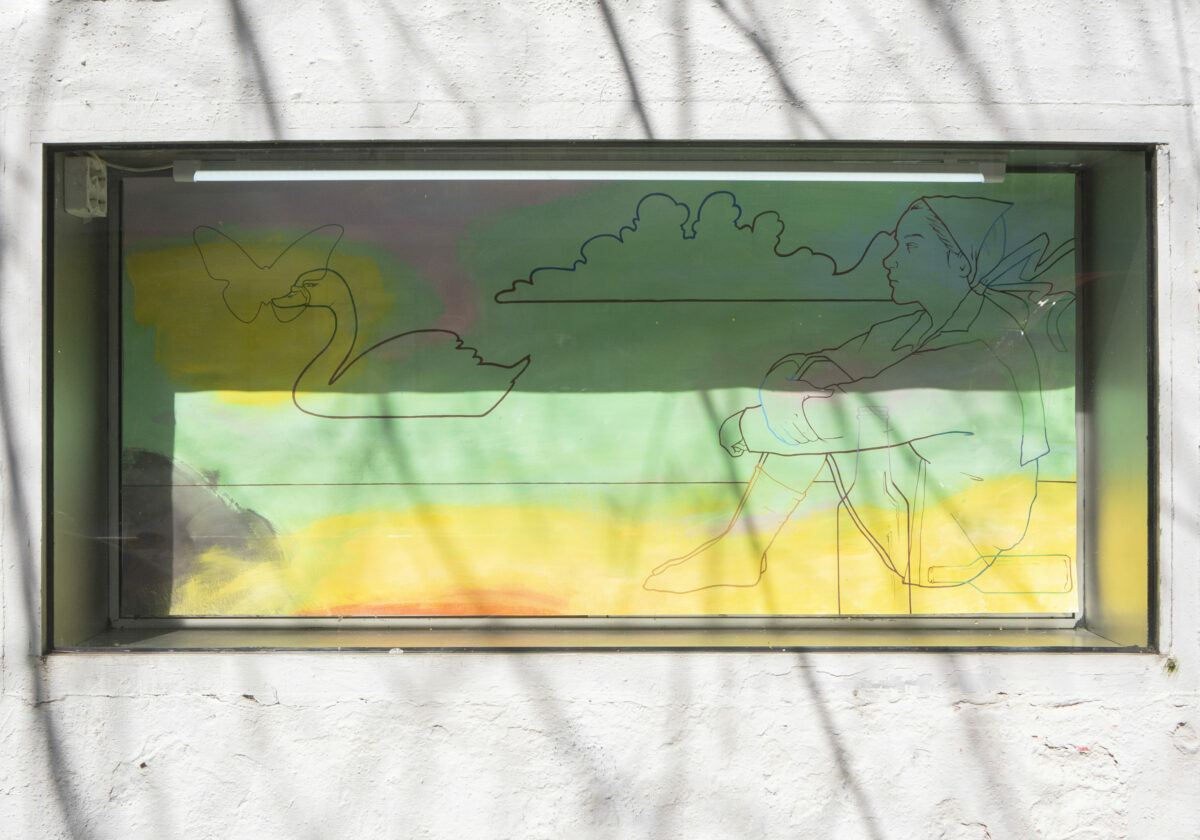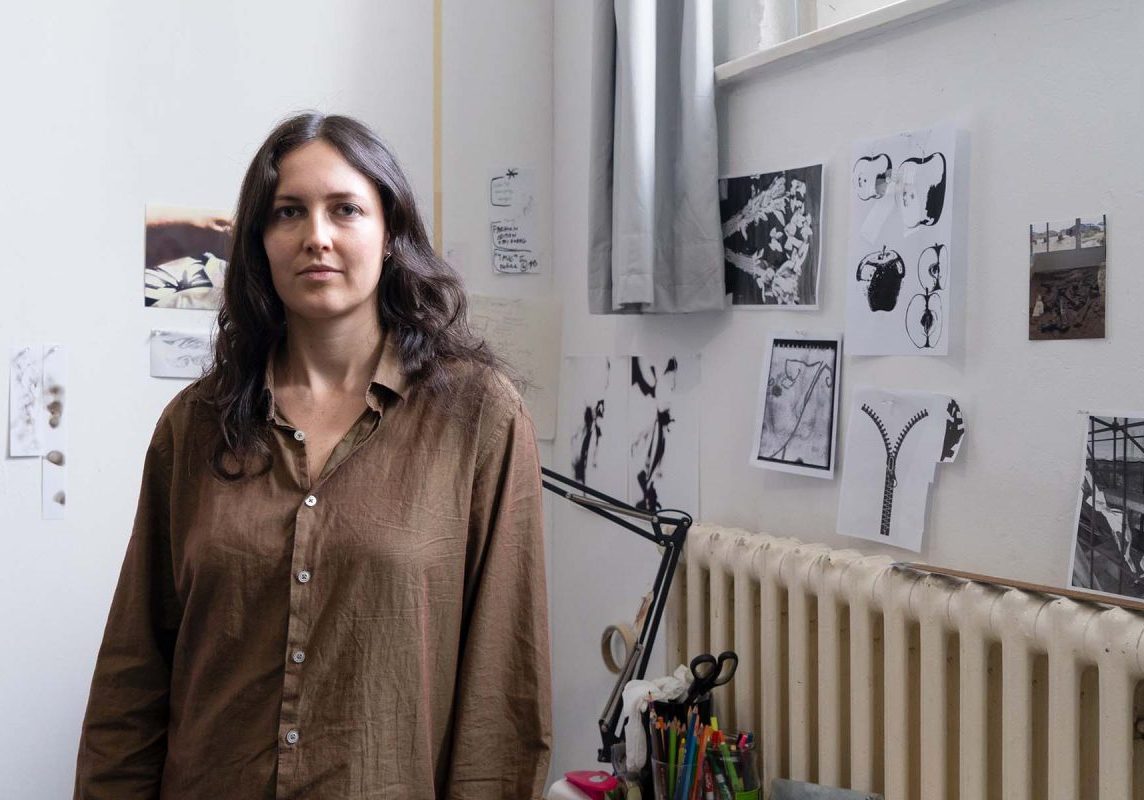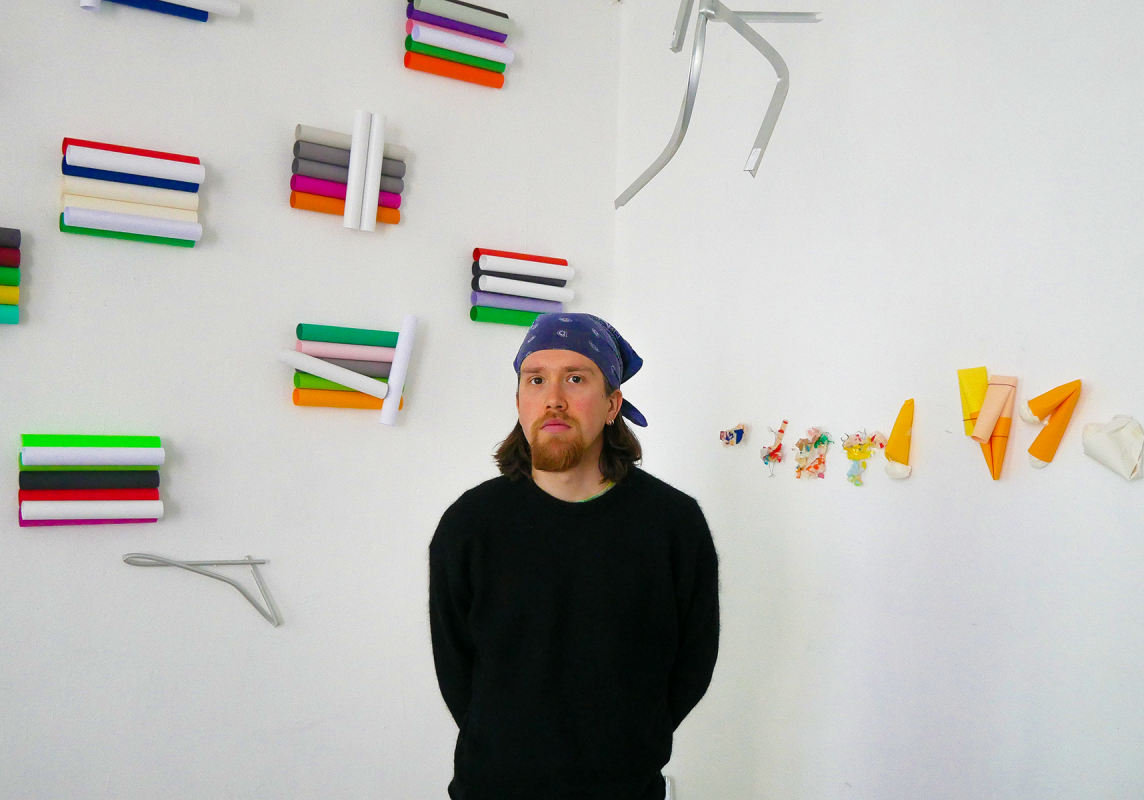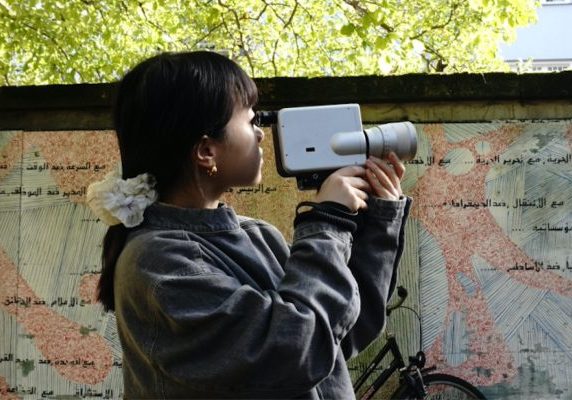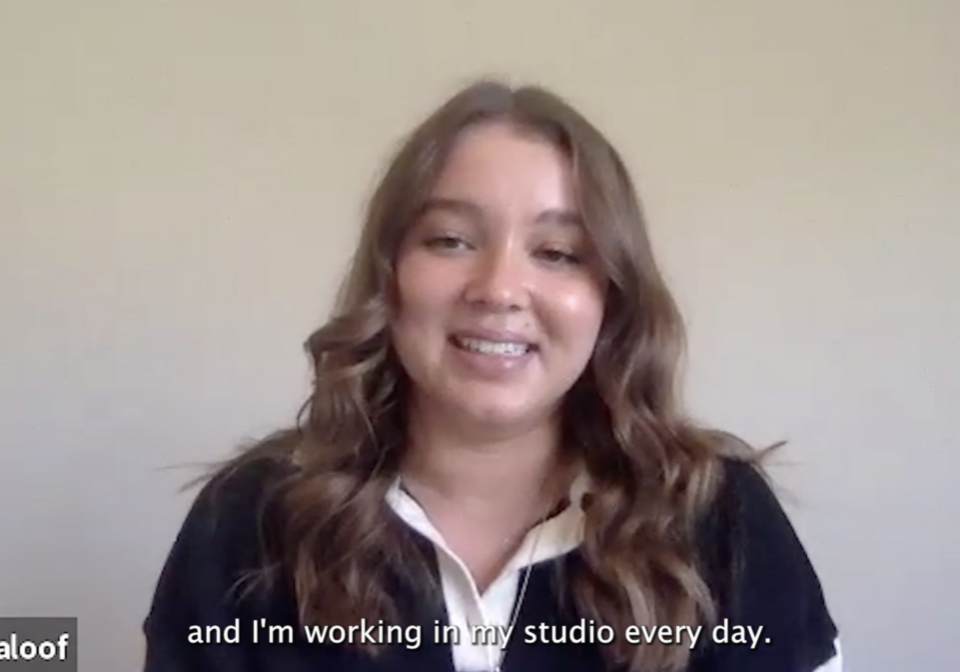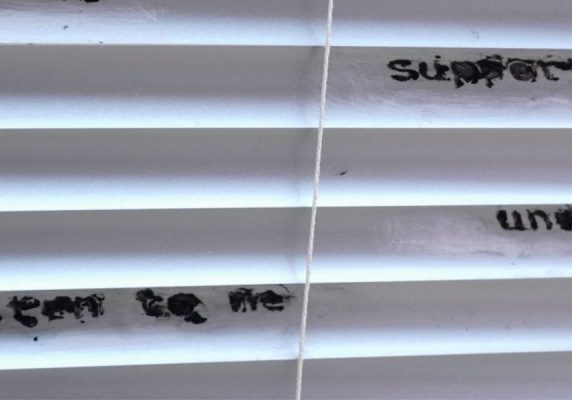Meet the Artists // Arbnor Karaliti & Ermir Zhinipotoku
Arbnor Karaliti’s art is a journey of self-discovery through painting and various mediums. Influenced by personal experiences and existential themes like isolation and various social taboos, he creates installations and explores social issues. His process-oriented approach involves sketching a red line on canvas before placing subjects, often friends and fellow artists.
Ermir Zhinipotoku’s paintings look into existentialism and psychology, using satire and tragedy to explore the absurdities of life. His work reflects a detachment from modern society and a longing for authenticity, seeking connections with human essence and nature. Through paintings inspired by biological and natural forms, he challenges our perceptions and methods of existence.
Can you start by giving us an introduction about you? How did you start making art and how did you start working together?
A: I’m Arbnor Karaliti, I come from Kosovo. I’m a visual artist, focused on painting, but also sometimes experimenting with new media like video and installation. We came together here because we studied together and we had a collective in which we used to work together in the past. Then we just thought that GlogauAIR could be a really nice opportunity to come back and have some time experimenting and coming up with something together.
E: My name is Ermir Zhinipotoku, I’m a visual painter from Kosovo too. I studied painting at the University of Arts, but sometimes I work with a bit of sculpture.
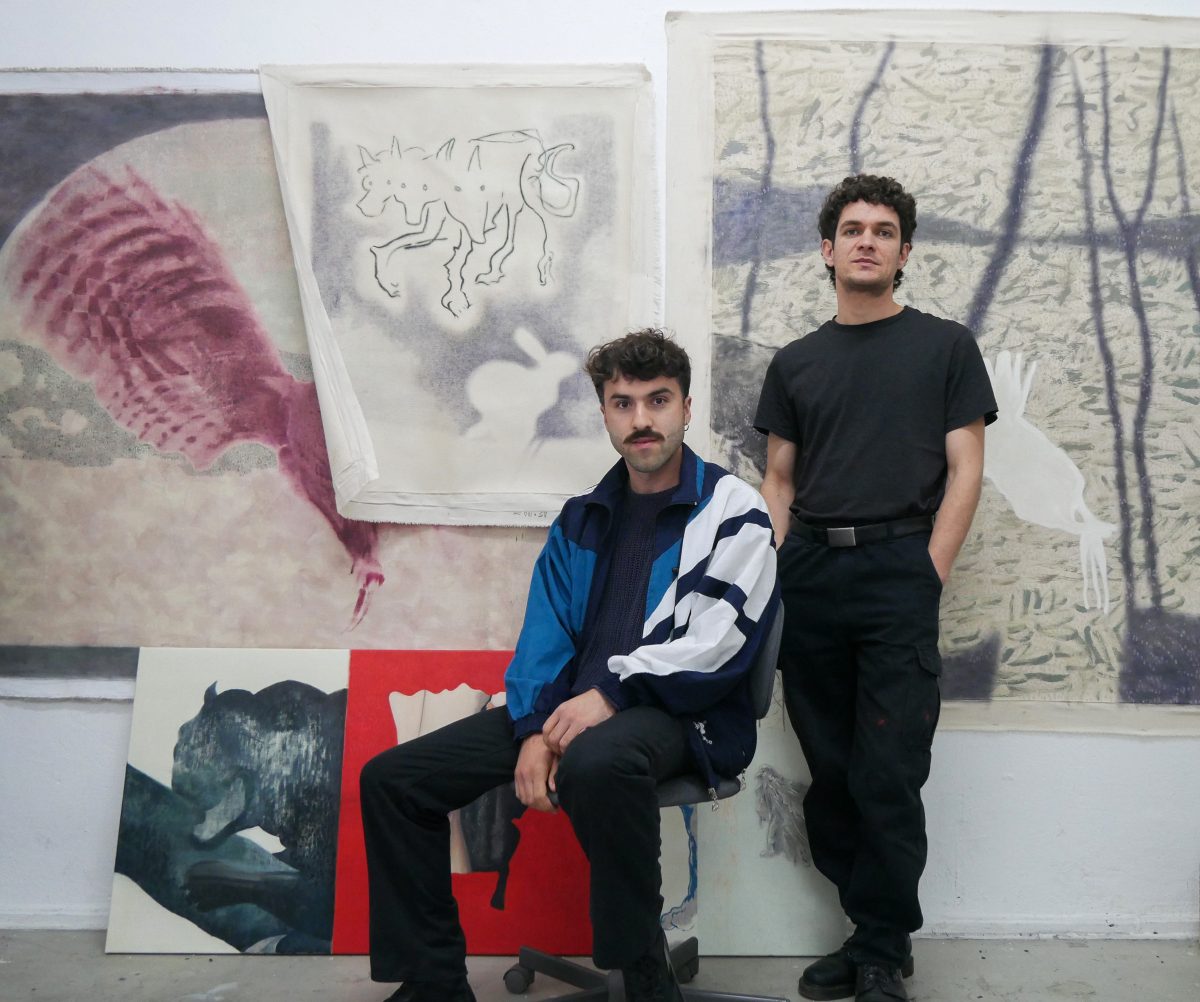
Can you describe your artistic practice? What is your process? What inspires you?
A: I was mostly focused on new media during my studies, and I was always painting on the side. I painted my friends and people around me, so that I could find a bit of connection with them. Then it just happened very naturally that I was leaving the new media to focus more on painting. It was very interesting for me to explore humanity and loneliness. Especially in our century, you’re so easily connected with the people thanks to technology, but then at the same time there’s always this moment when you go back home and you find yourself reflecting about yourself, your feelings and the loneliness you experience in this kind of world.
E: For me, inspiration comes mostly from personal experiences, but I am also getting very much inspired from music, movies and poetry.
Do you have any anecdotes that impacted you and/or your career?
A: Of course, I think there is a connection between my life and why I do art and why I’m focused on these things. I think how you grow up as a person, your personality and all the circumstances in life make you want to express yourself in a certain way.
Everyone has their different way of expressing their feelings to others. But since I was a kid, I always could see myself taking a piece of paper and drawing. That’s the way I could see myself sharing what was in my mind with others.
E: I remember very well when I was young, I think I was in 7th or 8th grade, and I was very busy at that time. After school, I went to art school. So I started very young. I think that was the only thing I could see myself doing.
What are your goals for your art? What is your relationship with the art market and the art world?
A&E: I think it’s always a bit sensitive to talk about the relationship with the art market. Especially nowadays, it feels like you have to choose if you want to be commercial.
But then you have to make a lot of compromises with your art and with yourself.
Otherwise, another way is to be really persistent. This way it takes much longer to be successful, then you are in the art market.
We chose the second one, so maybe we also chose to struggle a lot because it’s not that easy to be in the art market. But we don’t really like to make compromises. That’s how we see it.
Can you live off your art?
A: It’s very difficult, but it’s been 3-4 years that I don’t have other side jobs. So, I can live off it, even if there’s a lot of struggling and I don’t have a lot of money. I think it’s just a matter of managing your money.
I imagine it’s also important to just reach the audience and make them see you. Especially since I do portraits, it’s much more difficult. Only collectors want to invest in them. Elmo has much more to offer, I think. But on the other hand he doesn’t want to sell.
E: Yeah, I sell one or two works per year.
A: Also, Kosovo has way lower standards than Europe in regards to living costs. Whenever I travel, I’m spending like three times more. But the art scene there is doing pretty well. Once you prove that this is what you want, you are more easily part of it. We also just had Manifesta and there were around 200.000 visitors. I think it also helped with selling and being around Europe because we got so much attention during that period. I think that for a small country the art scene is huge.
You already told us why you came here. Why did you choose Berlin? Do you like the city? Is it influencing your works in some ways? And living with other artists, is it having an impact on your works or not?
A: I came here because I thought Berlin could be a really nice chance, especially for my style of painting. There are a lot of very interesting people around and among them I can see a lot of diversity and different experiences. This can be very inspiring.
Also, being in the residency is so nice because you meet a lot of people from all over the world, with a different culture and they’re all sharing the same space. I think you can learn a lot from these artists, especially as we don’t have the same medium. It’s really nice to be 24/7 in a space where you see people doing installations, videos and use ready-made materials and work with very different stuff. So I think for me it was very inspiring to just share the space with the other artists.
It was also my first residency.
E: It’s the same for me.
You have a studio where you work together back home. Is sharing your working and personal spaces different here?
A: Actually, I didn’t think that much about it because we share the same studio. And before we were together in the university for four years. So it’s like 10 years that we are used to sharing spaces every day. But before coming here I didn’t know that sleeping alone is so important. I really didn’t think about it because we are working together every day. But then I didn’t know that being together 24/7 is a different story.
Anyway, so far it was really nice. We could really share everything together and it was nice to learn more about each other’s ideas and stuff.
E: I feel the same. Every time we just want to go to the bar together.
A: Long story short, how we became friends was because we are in Pristina. We are both from other cities, not from the capital. So when we moved there, we were kind of excluded from the art scene and we felt ignored all the time. It’s not that easy, it’s very exclusive to be in the art scene there. I needed to do something about it. So, we were together all the time doing interventions and some exhibitions. That’s how we found the collective.
Then we could see that we are stronger doing something together. Because if you’re one single individual, no one really cares about you.
So, we were used to working together. Even when we work individually, we always share the ideas and we ask each other “what do you think about this and that”. At the same time, our styles are completely different. And this is relevant also with respect to other artists.
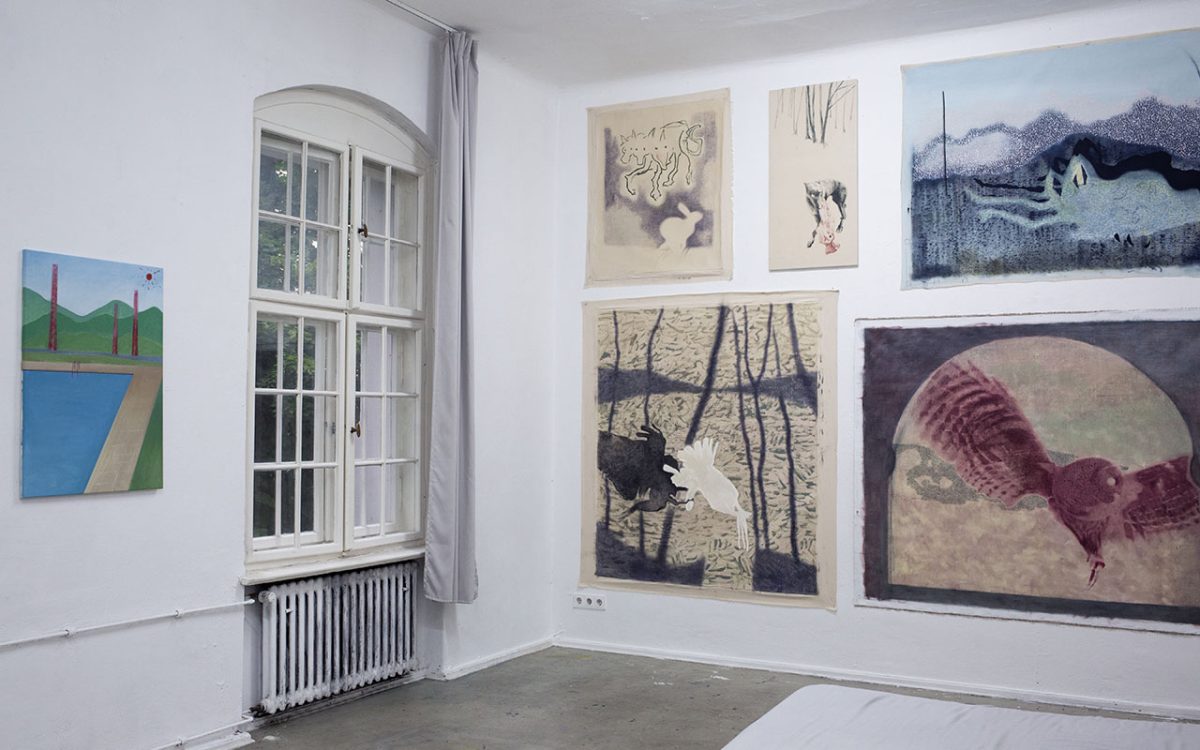
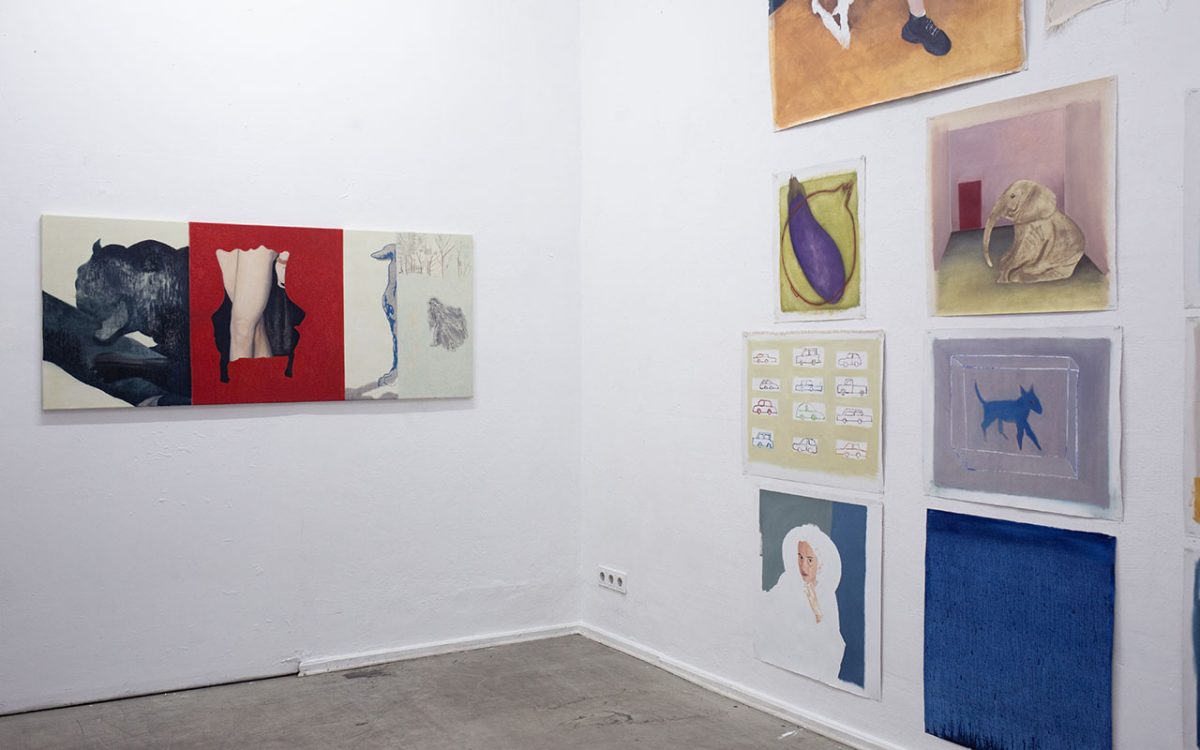
What are your plans after the residency?
A: I think I always liked Berlin, I used to live here. So I think I’ll come back for sure.
I don’t have a specific plan, but maybe slowly getting into the art scene. For sure, I want to be here. Maybe not immediately, but at some point.
E: First of all, my plan is to learn some languages besides my own. Then to have some shows at the end of this year. Then at some point I also want to come back, not necessarily in Berlin. I want to travel to other European cities.


